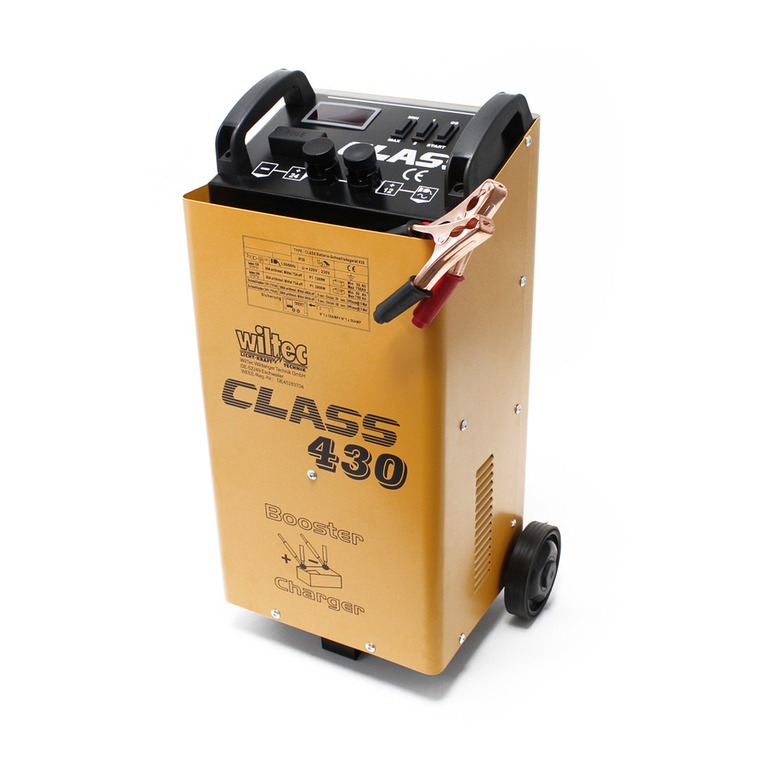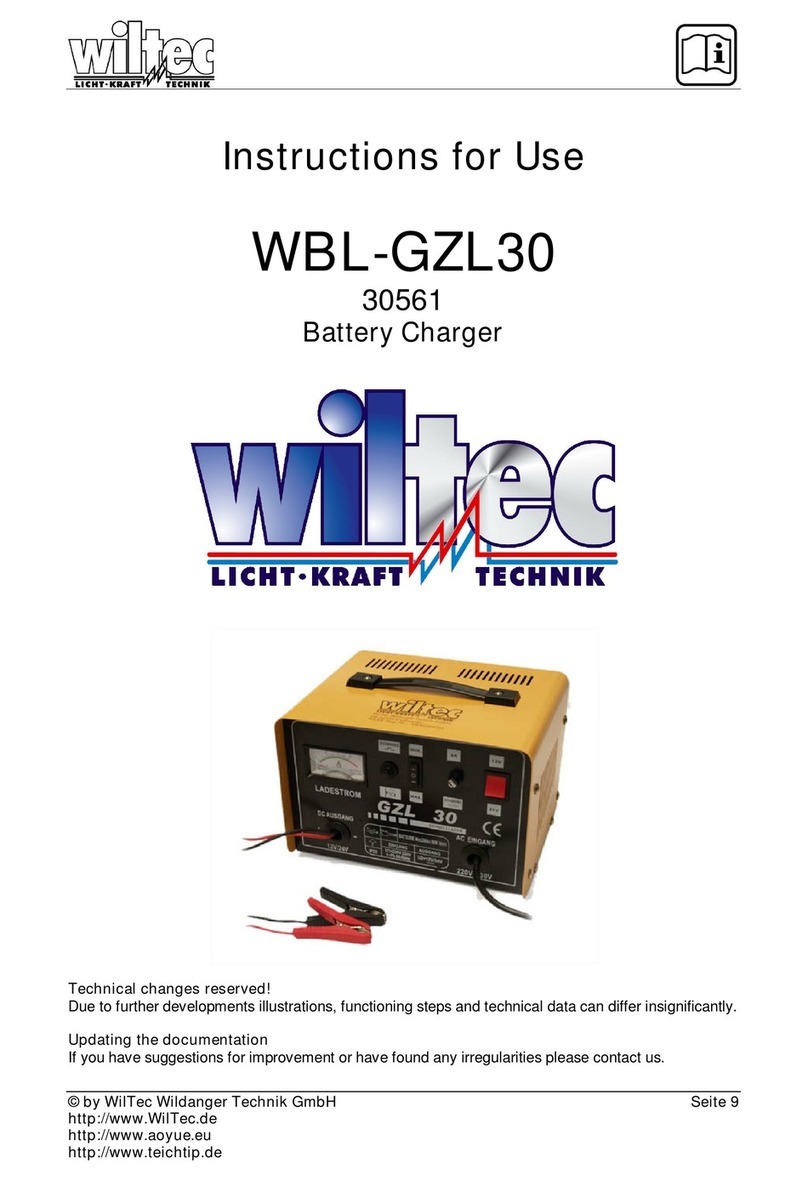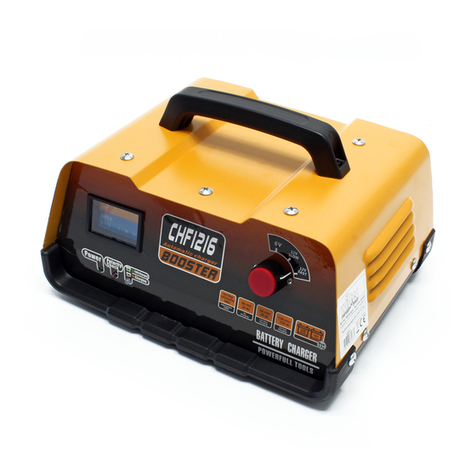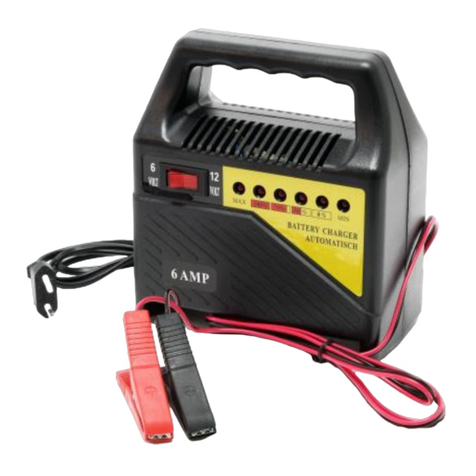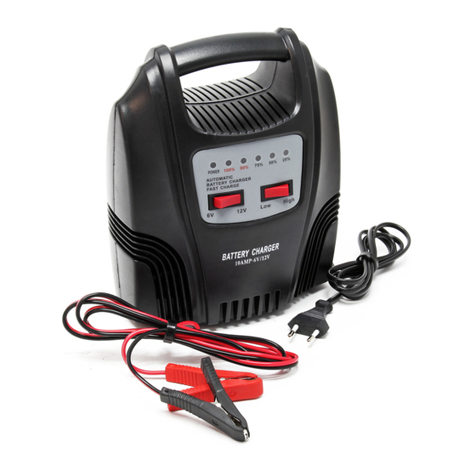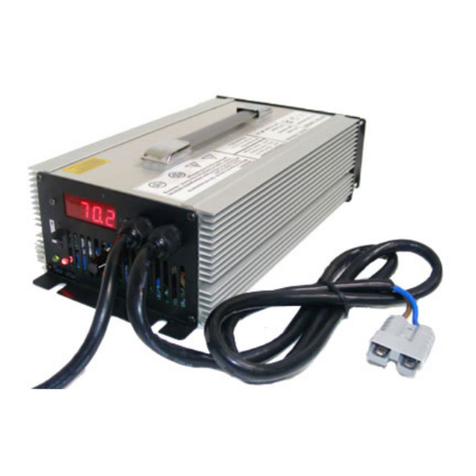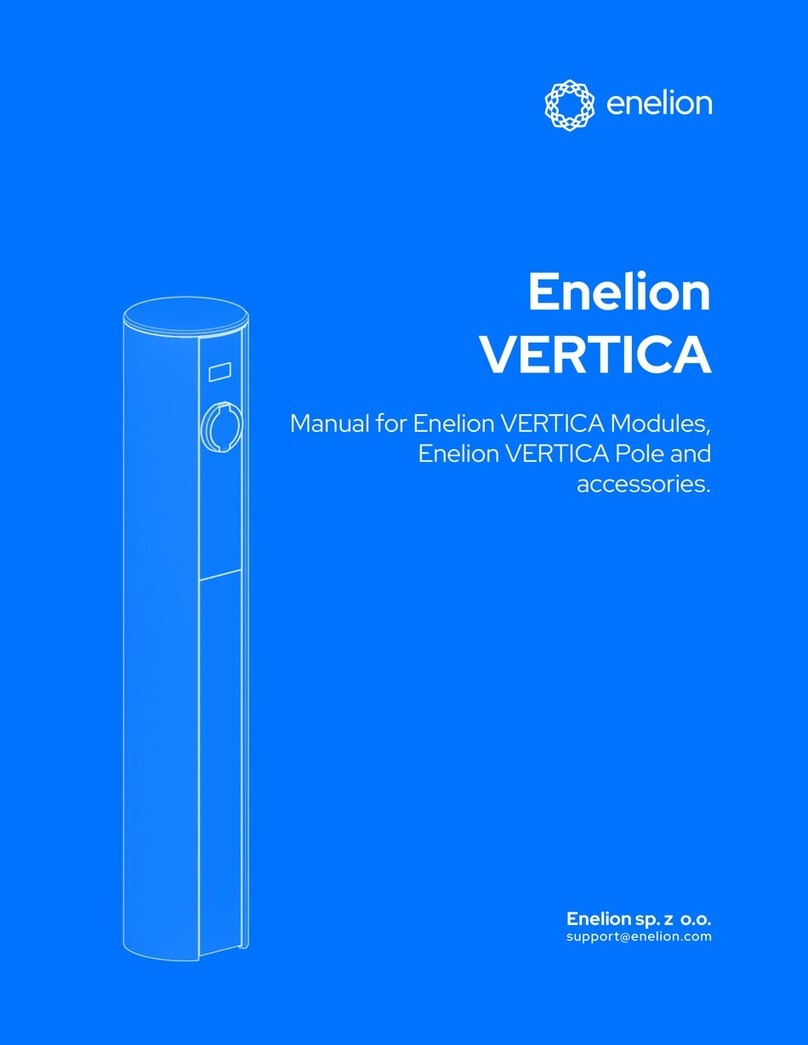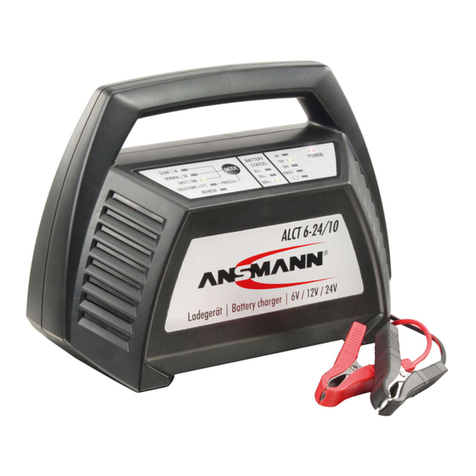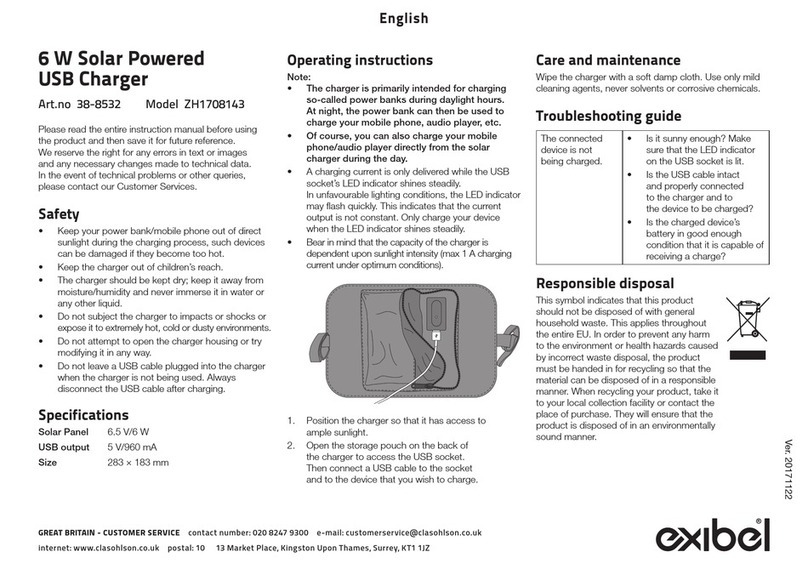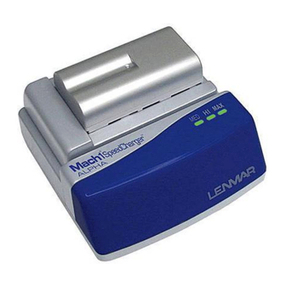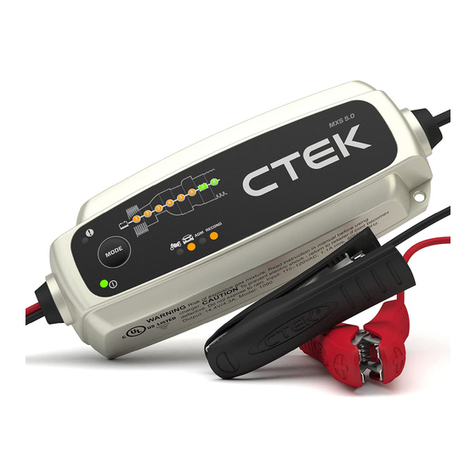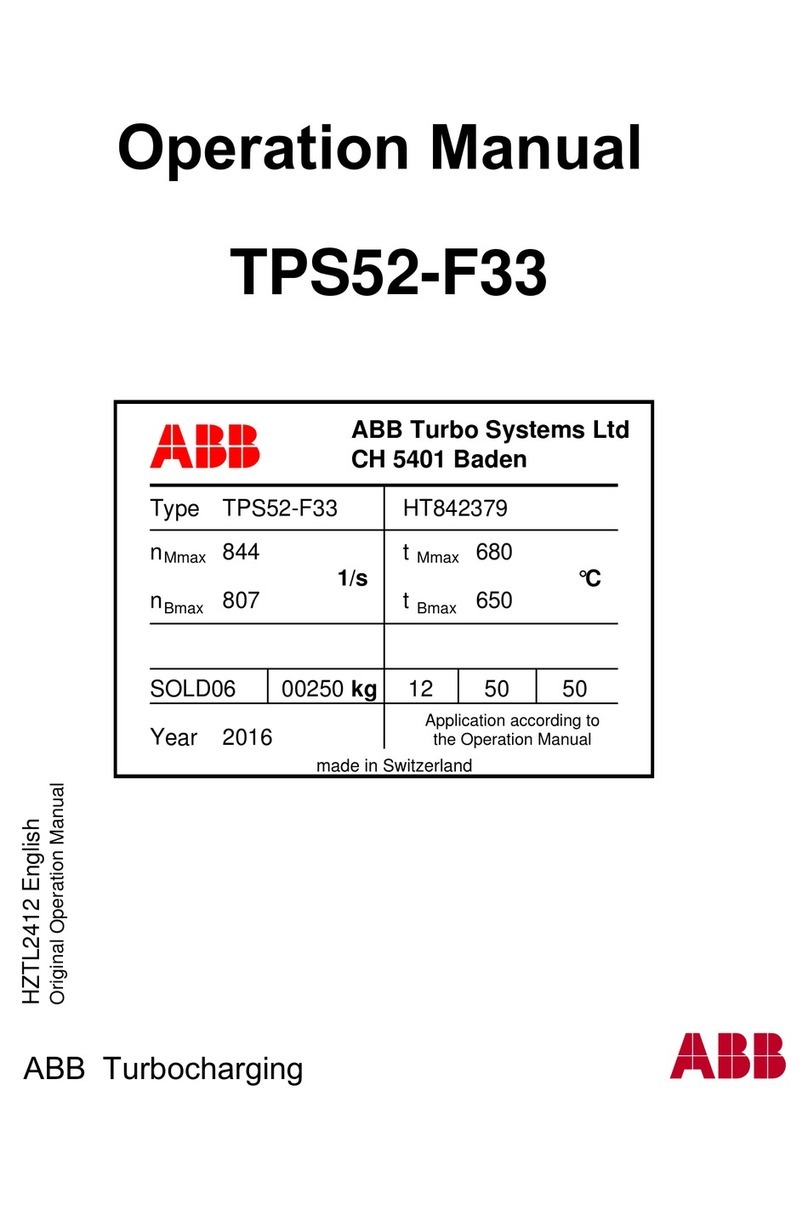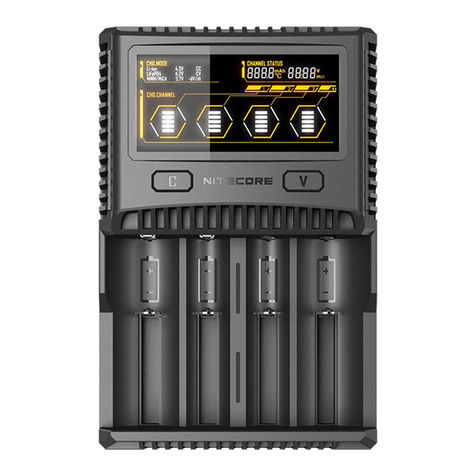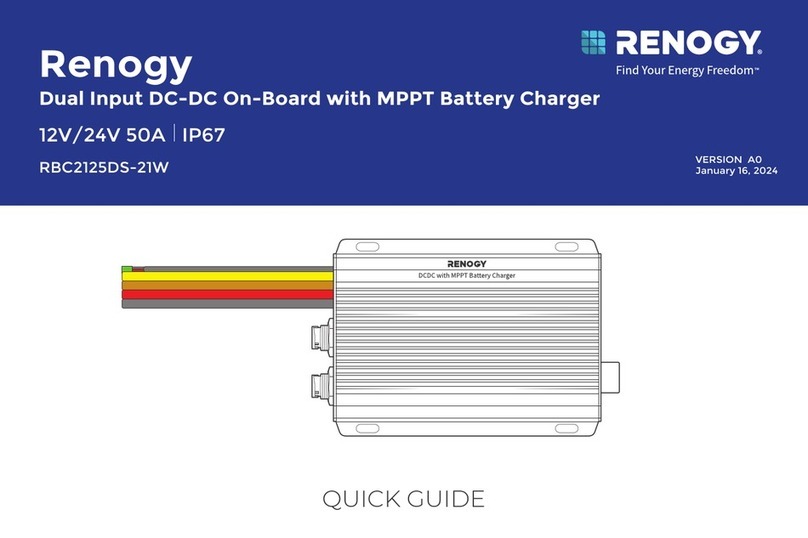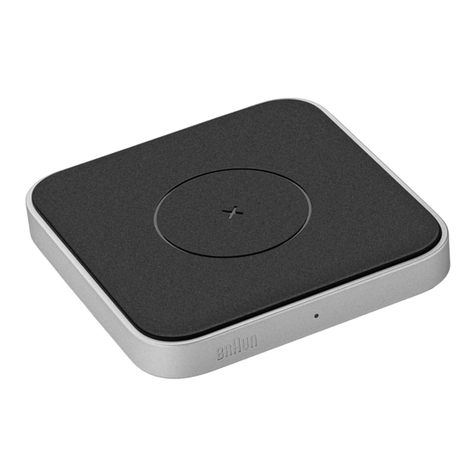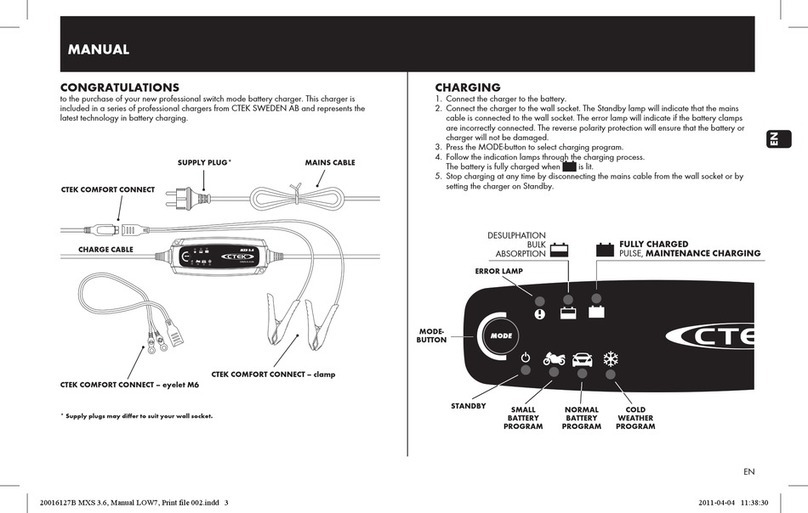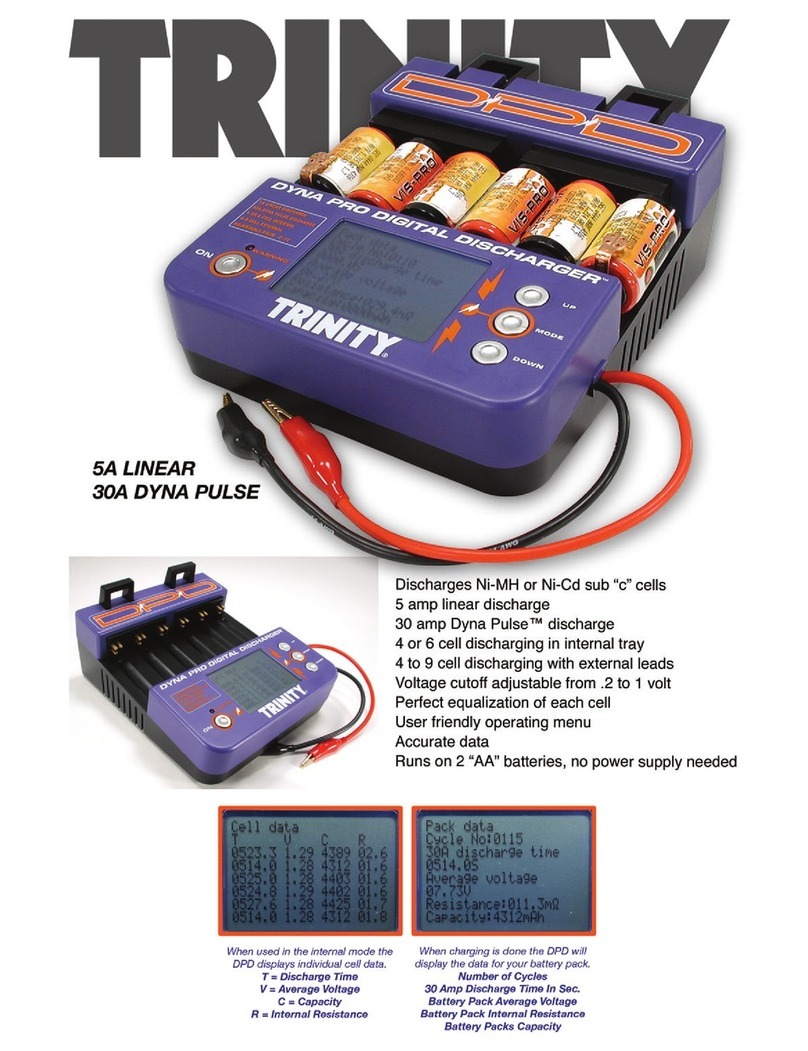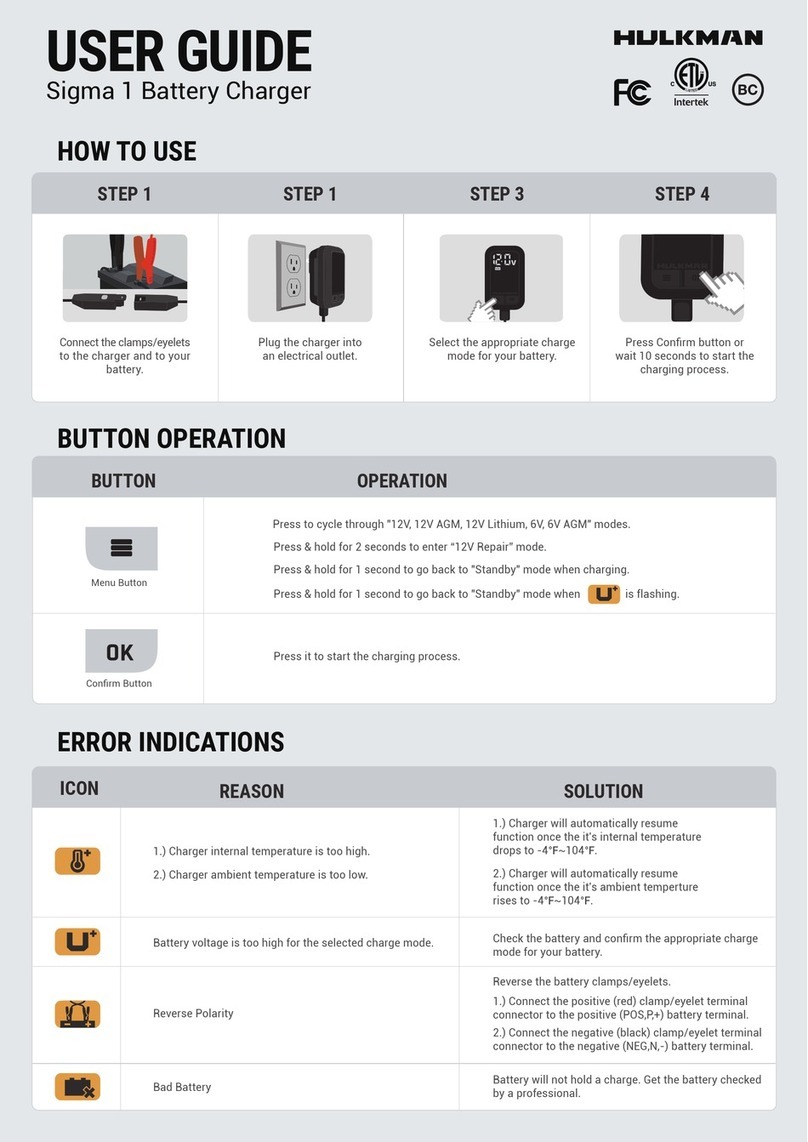DCharging a 6 V battery (lead-acid, GM and gel battery) with 2 charging current.
EDefective battery.
FTerminals are connected incorrectly (reverse polarity) or there is a short circuit.
GDisplay of the battery voltage in volts.
HState of charge of the battery in percent (1 bar = 25 %) and charging process.
(charging bar in the battery symbol flashes = battery is being charged; all charging bars
light up = battery is fully charged).
Notes on automatic charging
The charger is a microprocessor-controlled automatic charger, i.e. it is particularly suitable for charging
maintenance-free batteries and for long-term and trickle charging of batteries that are not in constant
use, e.g. for vintage cars, motorhomes, lawn tractors and the like. The integrated microprocessor en-
ables charging in several stages. The last charging step, the trickle charge, keeps the battery capacity
at 95-100 % and thus the battery always fully charged. The charging process does not need to be
monitored. However, do not leave the battery unattended when charging it for a longer period of time
so that you can disconnect it from the mains in case of a malfunction of the charger.
Charging settings
Press the mode function button (fig. 1, 1) to set the charging functions 12 V/2 (fig. 2, ), 12 V/4
(fig. 2, B) and 12 V/4 winter mode (fig. 2, C).
Charging the battery
Loosen or remove the battery plugs (if present) from the battery.
Check the acid level in the battery. Top up with distilled water if necessary (if possible).
Important! Battery acid is aggressive. Rinse off any acid splashes thoroughly with plenty of
water and consult a doctor if necessary.
First connect the red charging cable to the positive terminal of the battery.
Then connect the black charging cable to the body of the vehicle, not to the battery and fuel
line.
Warning! Normally, the negative terminal of the battery is connected to the body and you
can pass to the next step. In exceptional cases, however, it is possible that the positive ter-
minal of the battery is connected to the body (positive earth). In this case, connect the black
charging cable to the negative terminal of the battery. Then connect the red charging cable
to a point that is a sufficient distance from the battery and the fuel line.
fter the battery has been connected to the charger, you can connect the charger to a 230
V ~ 50 Hz socket. The unit automatically detects the nominal voltage (6 V or 12 V) of the
connected battery. The LCD display lights up green. Do not connect the unit to a socket that
supplies a different mains voltage.
Important! Dangerous explosive gases may be produced during charging. Therefore, avoid
sparks and open flames during charging. There is a risk of explosion!
If the battery terminals are connected the wrong way round, the interchange protection en-
sures that the battery and the charger are not damaged. In this case, disconnect the char-
ger from the battery and the socket. Wait about 3 min and then restart the charging pro-
cess.
https://www.XPOtool.com rticle 62971, 62972 Page 5
The Tool Experts
04 2021-1
